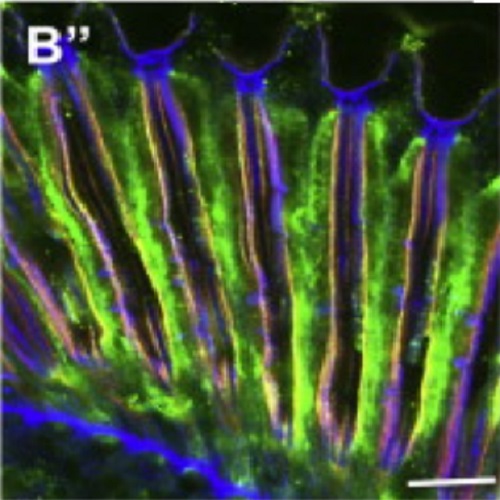Crumbs regulates polarity and prevents light-induced degeneration of the simple eyes of Drosophila, the ocelli.
The evolutionary conserved transmembrane protein Crumbs (Crb) regulates morphogenesis of photoreceptor cells in the compound eye of Drosophila and prevents light-dependent retinal degeneration. Here we examine the role of Crb in the ocelli, the simple eyes of Drosophila. We show that Crb is expressed in ocellar photoreceptor cells, where it defines a stalk membrane apical to the adherens junctions, similar as in photoreceptor cells of the compound eyes. Loss of function of crb disrupts polarity of ocellar photoreceptor cells, and results in mislocalisation of adherens junction proteins. This phenotype is more severe than that observed in mutant photoreceptor cells of the compound eye, and resembles more that of embryonic epithelia lacking crb. Similar as in compound eyes, crb protects ocellar photoreceptors from light induced degeneration, a function that depends on the extracellular portion of the Crb protein. Our data demonstrate that the function of crb in photoreceptor development and homeostasis is conserved in compound eyes and ocelli and underscores the evolutionarily relationship between these visual sense organs of Drosophila. The data will be discussed with respect to the difference in apico-basal organisation of these two cell types.

- Eur. J. Cell Biol. 2012 Sep 18;91(9):706-16
- 2012
- Cell Biology
- 22608020
- PubMed
Enabled by:
